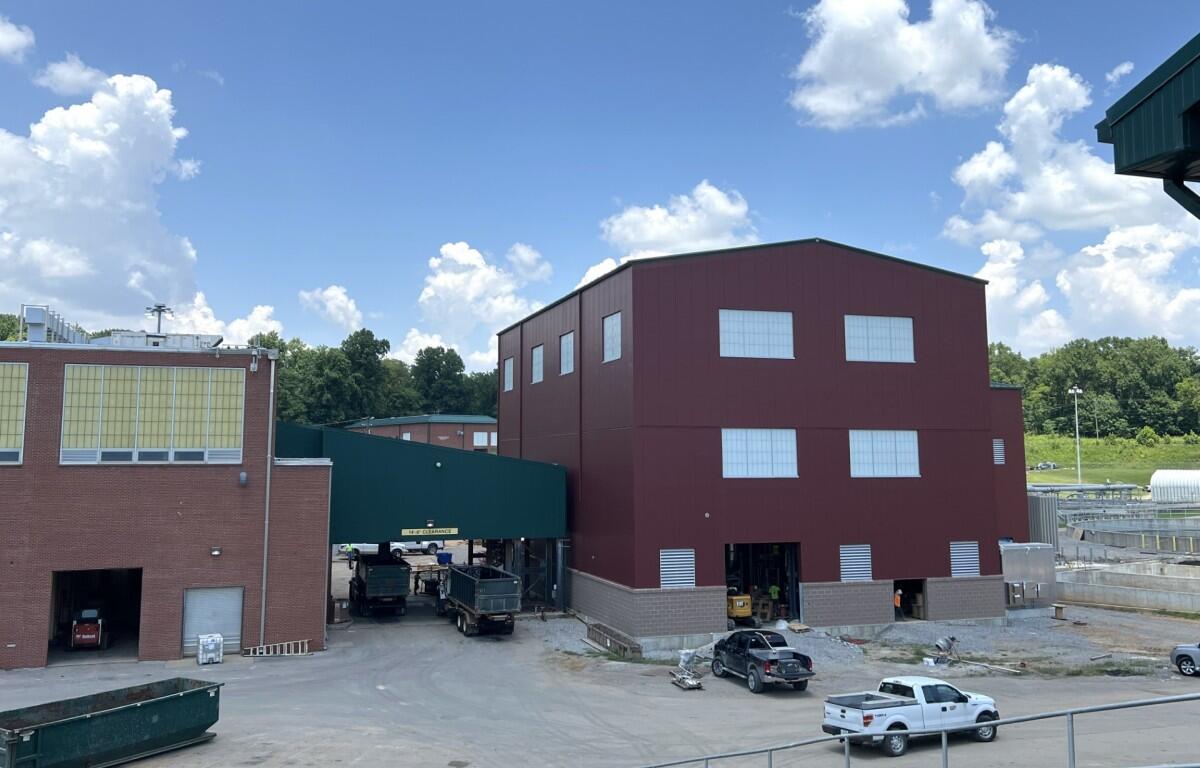CLARKSVILLE, TN (CLARKSVILLE NOW) – The city Gas & Water Department’s thermal dryer project has been pushed back until September due to several delays, including one that wound up saving the city millions of dollars.
With the project, the city has built a facility to treat and stabilize biosolids generated in the treatment of sewage at the Clarksville Wastewater Treatment Plant (WWTP).
The 9,600-square-foot, 65-foot-tall building will house the thermal drum dryer and associated natural gas-fired furnace. The development will also house a complex, multi-story array of support equipment and associated piping and ductwork.
Project timeline
Clarksville Gas & Water General Manager Mark Riggins told Clarksville Now the project’s initial delay actually worked to their advantage. “There was a delay there for about a year, initially, and that was because we had been waiting for a grant application to go through,” Riggins said. “We would not have qualified if we had begun that project.”
Thanks to the patience of all of the parties involved, Clarksville Gas & Water received a $15 million grant for the thermal dryer. But that patience also pushed the timeline back until April.
Along the way, through regular weather delays and delays on specialized equipment shipping from different parts of the world, the project is now scheduled for implementation in September. Riggins said he looks forward to the facility getting up and running.
Land application of biosolids
In the meantime, Riggins said they are still throwing around the idea of land application of the biosolids due to the interest from the community, but they have additional research to conduct. This includes plans to have the product/pellets tested to see what they can and can’t do with them. It also includes researching regulations at a state and federal level.
“I know the big concern is the PFAS in those pellets,” Riggins said, referring to per- and polyfluoroalkyl substances, persistent chemicals that can end up in household and commercial wastewater. “We’re keenly aware of that, and we’ll weigh the option of land applying and providing that for the farmers, which they do want. We’re in touch with a lot of farmers who are interested, especially with the price of fertilizer being so high. But we’ll weigh that against what the federal regulations are.
“If there is potential for hazards in the future, I don’t want to do that. These are our friends and neighbors. If there is a future potential for hazards or anything like that, we just won’t do it. For me, it’s not about deferring the liability or responsibilities, it’s about taking care of our home.”
Until the thermal dryer opens, Gas & Water will continue hauling the sludge to the Bi-County Solid Waste Landfill on Dover Road.
How thermal dryer works
Currently, un-stabilized sewage biosolids are taken to the Bi-County Landfill for disposal. However, landfill operators have taken issue with the workability of these biosolids, and area residents have complained for years about the odor during hauling and disposal, according to previous reports.
The thermal dryer process will produce a stabilized, pelletized biosolid that may be suitable for reuse. Disposal at the landfill will continue to be an option. Here are some ways the thermal dryer will affect the biosolids:
- The water content of the bio-grades will significantly decrease, which improves ease of handling at the landfill.
- There will be a reduction of volume and mass, which reduces landfill tipping fees.
- The number of complaints due to the odor will be minimized or eliminated.
“The thermal dryer project at our Wastewater Treatment Plant is an innovative step within the progressive process of waste elimination that will significantly reduce the odor and volume of wastewater byproduct currently delivered to our local landfill,” Riggins previously said.
DOWNLOAD THE APP: Sign up for our free Clarksville Now app


